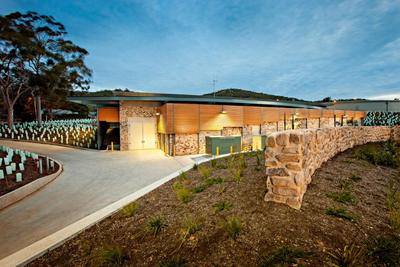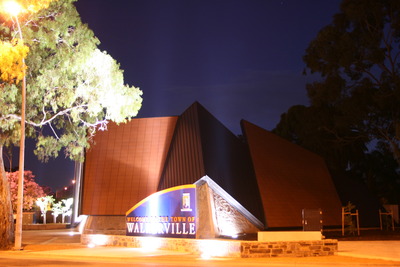SA Water's 'game-changing' interconnection project secures flexible, reliable future
The North South Interconnection System Project (NSISP) has transformed the way SA Water’s entire metropolitan water supply network operates. It supplements the state’s existing water supply network and is part of an innovative, long-term solution to meeting the demands of drinking water needs in South Australia.
The NSISP combines new and existing infrastructure and integrates bulk water transfer into the same network that delivers to the customer tap across the entire city of Adelaide. The integration of the network makes it possible to take advantage of water availability, independent of source or network location. This delivers an unprecedented level of flexibility and reliability of water supply essential to meeting demand beyond 2050, while also ensuring water security during events such as prolonged drought.
The project not only provides secure and flexible water supply to Adelaide to beyond 2050, but is significant as a project that has been recognised nationally as being managed to the highest standards.

Early concepts for the NSISP suggested construction of a single bulk transfer pipeline, requiring an investment of $1.1 billion. During the feasibility phase, multiple project delivery options were evaluated using a sophisticated approach, where all possibilities were rigorously explored. An asset condition assessment program coupled with a complex, system-wide hydraulic model of the Adelaide water supply network enabled design optimisation of NSISP at concept stage. This prevented unnecessary investments in capital and time and delivered clarity around specifications and new infrastructure requirements.
The large number of criteria to be evaluated and assessed for likely successful combinations of pipes, valves and pump stations would have been time- and cost-prohibitive using typical, manual engineering and desktop study techniques. The use of a sophisticated genetic algorithm technique was implemented as a necessarily powerful basis for generating a range of possible optimal solutions. These were further refined by multicriteria analysis using functional, economic, social and environmental indicators. 32 options were reduced to four, with these going through detailed technical review to identify considerations relevant to the design of each option, such as functionality, hydraulic performance and constructability. The top ranked design was then taken to concept and detailed design, becoming the NSISP as we see it today.
The NSISP that was delivered utilises existing infrastructure where practicable for reduced environmental impact, durability, cost-effectiveness and efficiency - with a construction cost of $403 million.
The NSISP is considered a ‘game-changer’ not only for its transformative impact on South Australia’s water supply but for the outstanding project management undertaken to meet the complexities and challenges of a project of this scale. In the recent Australian Institute of Project Management awards, SA Water and the Waterlink SA joint venture comprising Parsons Brinckerhoff, MWH and Tonkin won the national award for construction/engineering projects greater than $100 million. This national award acknowledges both the dedication and skill of the many people across SA Water, the Waterlink SA joint venture group and the broader integrated team, as well as the use of an innovative and integrated approach to management of the project.
A strong community and stakeholder focus led to integration of ‘non-traditional’ skills in to the project delivery team. Architects, landscape architects, and noise and vibration specialists worked side by side with traditional engineering skills to deliver the final designs for above-ground infrastructure components of the project. Utility infrastructure has a reputation for looking somewhat utilitarian, lacking design flair and aesthetic appeal. In contrast, the NSISP infrastructure, designed with community input, integrates with the surrounding residential environments, minimises impact on the streetscape and enhances the amenity of each site. The architecturally designed buildings feature a series of urban forms that are interesting, iconic and valued by the community - highly untypical of urban infrastructure delivered by a utility.

To manage community concern, the NSISP set noise targets for the new pump and valve stations well below standard industry practice. The project’s acoustic engineers were given the challenge of making these buildings as quiet as possible, which resulted in advanced levels of acoustic attenuation being installed on these new pieces of infrastructure. This assisted with the high level of community satisfaction with the final result.
A more complex water distribution system means a more intricate operational environment. The new control system that accompanies the NSISP infrastructure is delivering benefits and operational insights that have exceeded internal and external expectations. It incorporates groundbreaking decision support tools that analyse the entire network, enabling real-time network monitoring and control and optimisation of operations due to short- and long-term network demand and configuration changes. This sophisticated operational management and control technology will also contribute to ongoing operational efficiencies, in turn delivering customer service improvements and minimising costs. Operators now have the flexibility to maximise efficiency of water transfer and supply using predictive tools which consider the weather, historic consumption, power costs and local network status.
System optimisation has also been delivered through the inherent flexibility and adaptability of infrastructure delivered by NSISP. Other benefits include energy optimisation initiatives, energy recovery opportunities and an ability to model the impact of, and priority given to, capital expenditure projects. This represents Australian best practice operational flexibility, efficiency and use of available resources, delivering an outstanding commitment to the short- and long-term performance of water services for the public by SA Water.
NSISP leaves a legacy that reaches far beyond its project boundaries. It has changed the way in which the SA Water business thinks, plans and operates, has delivered vital intelligence to guide future project delivery, workplace culture and team performance, and has challenged the norm. Critically, this $403 million project was delivered on time, to budget and achieved over 1.8 million hours worked without lost time injury.
$14K community grant provides water savings for school
Lalor North Primary School has undergone a water-saving transformation thanks to a community...
Lagoon cover dewatering solution for Gippsland Water
Gippsland Water was experiencing issues with its cover dewatering pumps, which were solved...
The role of AI in smart water management
IoT sensors, AI and predictive analytics are emerging as key solutions to enhance water...










